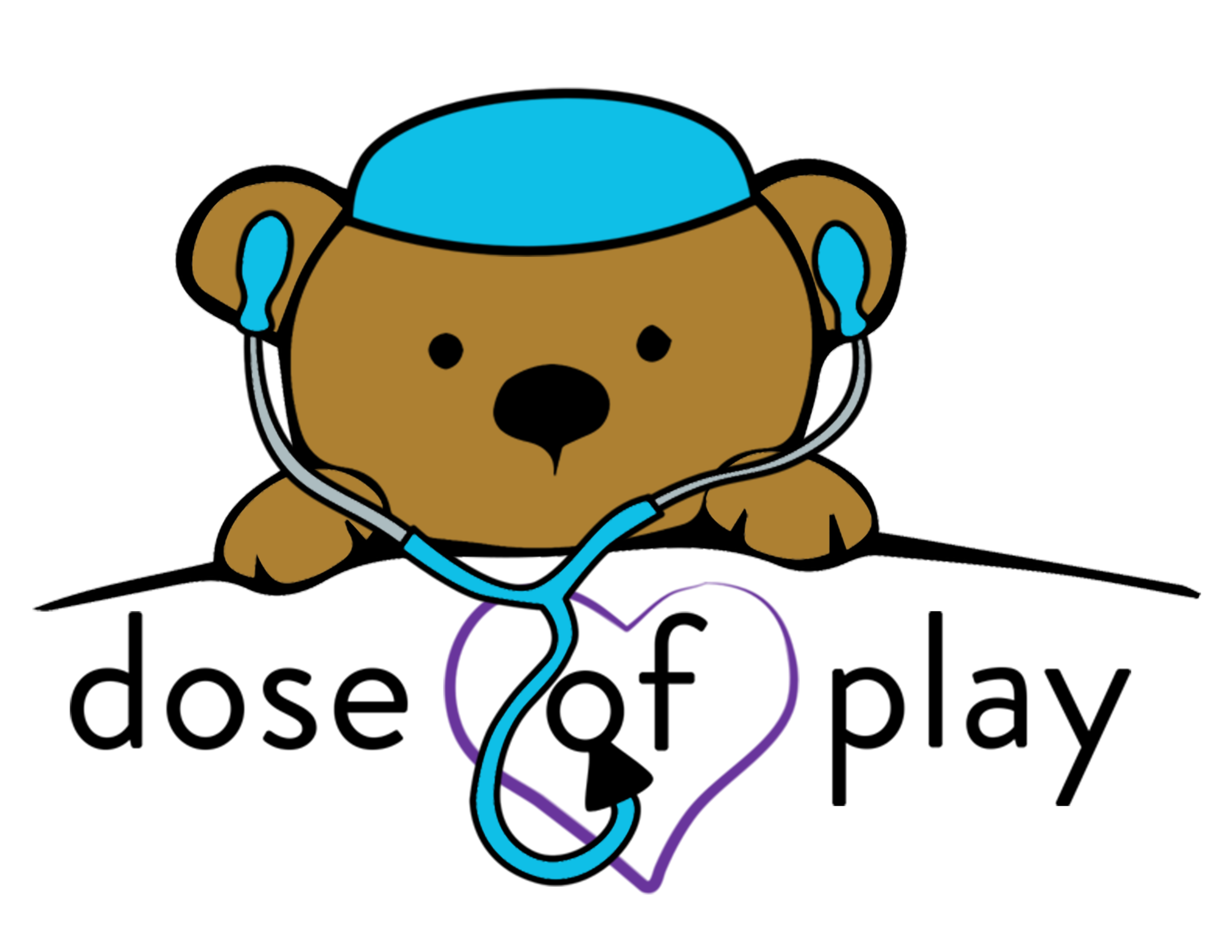Medical shape sorting game
Not all hospitalized children are bedridden. In fact, there are many children throughout the hospital who are able to move, with or without assistance, around their room and to other areas of the hospital. But at this time of the year, many of those who are able to play on the floor or at a desk cannot leave their rooms due to infection control policies.
Even when a child has freedom to be a child and play within their designated treatment environment, how long can we really expect them to stay entertained confined in the same room playing with the same two or three toys. That's where a little repurposing of your resources can come in handy.
Incorporating medical items a child might be seeing, feeling or hearing into play can help her to understand the function and reason for their use, which can ease anxiety and clear misconceptions. By familiarizing and allowing manipulation of real medical equipment and materials, children can gain mastery over their own medical experiences. Children can learn to cope with new and familiar experiences through play.
Shape sorting game - medical edition:
1. Collect medical items in the hospital room, playroom, or from past doctor visits that can easily be identified as being circular, square, rectangular or triangular in shape.
Tip: keep any safe medical items the medical team will let you have! Your insurance likely paid for it! Keep the tape. Keep the basin. Keep it all. #recycle
Circular: surgery donut pillow, tape roll, an old hospital ID bracelet taped back together, cotton ball
Square: hospital parent/visitor ID badge, gauze, unopened adhesive remover
Rectangular: band-aid, ointment (perhaps box is more so the shape), toddler hospital sock flattened, tongue depressor, glove box, tegaderm, toy pager, emesis basin
Triangular: travel size toothpaste, cut gauze, tape 3 cotton swab sticks into shape
2. I used painter’s tape on a newly washed floor, but another option is to draw out the shapes on pieces of construction paper taped together. Presenting learning concepts in a novel way is more interesting to the young child, so have fun with it. You could even construct the shapes out of other recycled items, such as expired tubing or ice pop sticks (resembling tongue depressors).
3. Identify/review what each shape is with your child and explain the game in simple terms. “In this game, you have to find triangle shapes out of these “doctor” items and put them in the large triangle.” And so on.
4. To help a young toddler learn how to problem solve, one technique is to think out loud of what you are doing. “Hmm, I will help you look for a circle. A circle is round, just like a ball or a blueberry. This one can’t be it…it has corners like a book…”
It’s okay if they don’t get many “correct.” This activity is intended to help familiarize young children with medical equipment names and practice shape recognition. While it starts as a guided activity, it is still intended to be an opportunity to allow them control, which is what toddlers developmentally strive for at this stage. Being hospitalized can be very restricting and kids often have a challenging time coping for this reason. This is intended to be fun and an opportunity to lead into open-ended medical play for children. Follow along on Instagram to see more photos and videos!
Share your experiences with medical play below!
Have fun!





